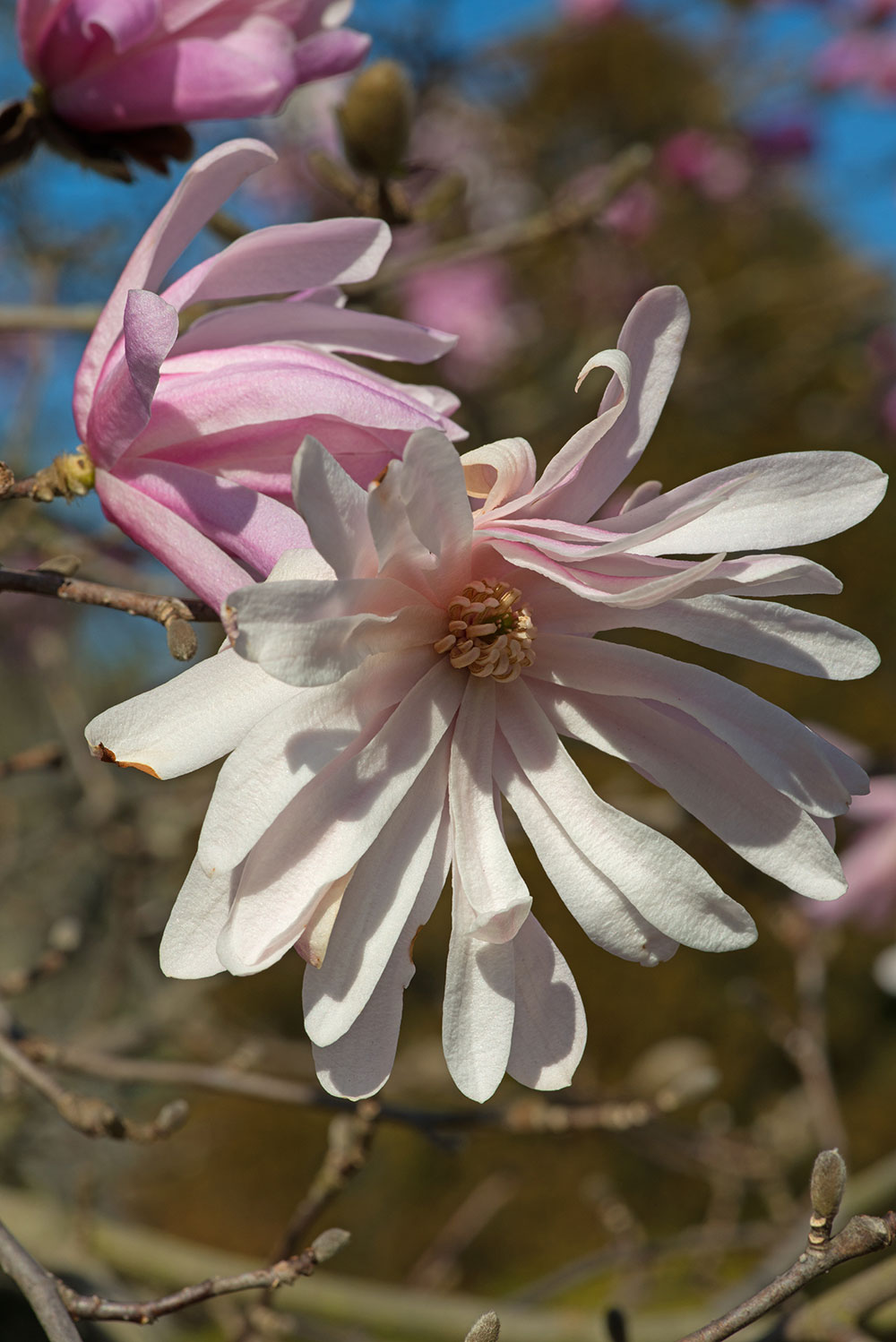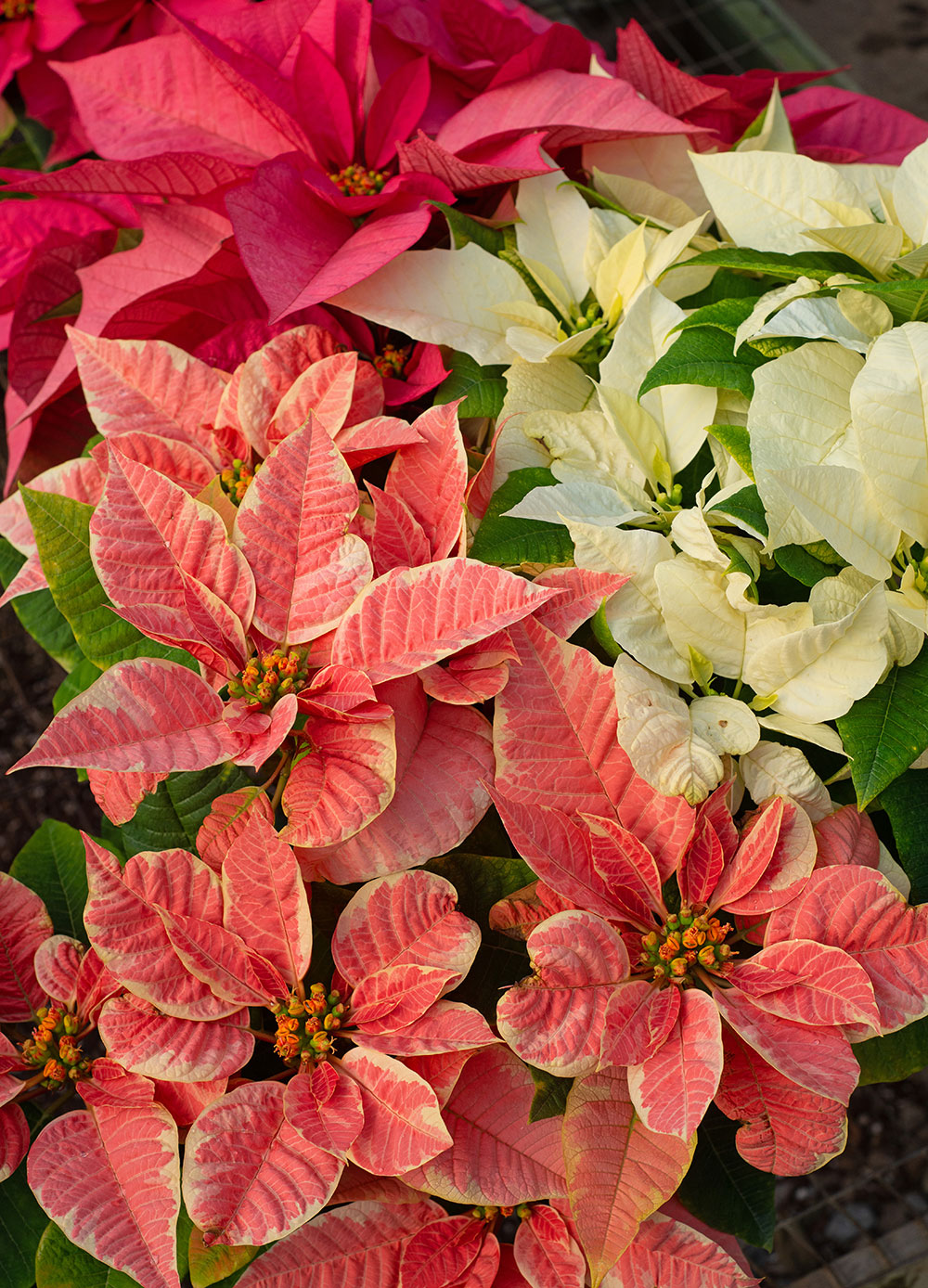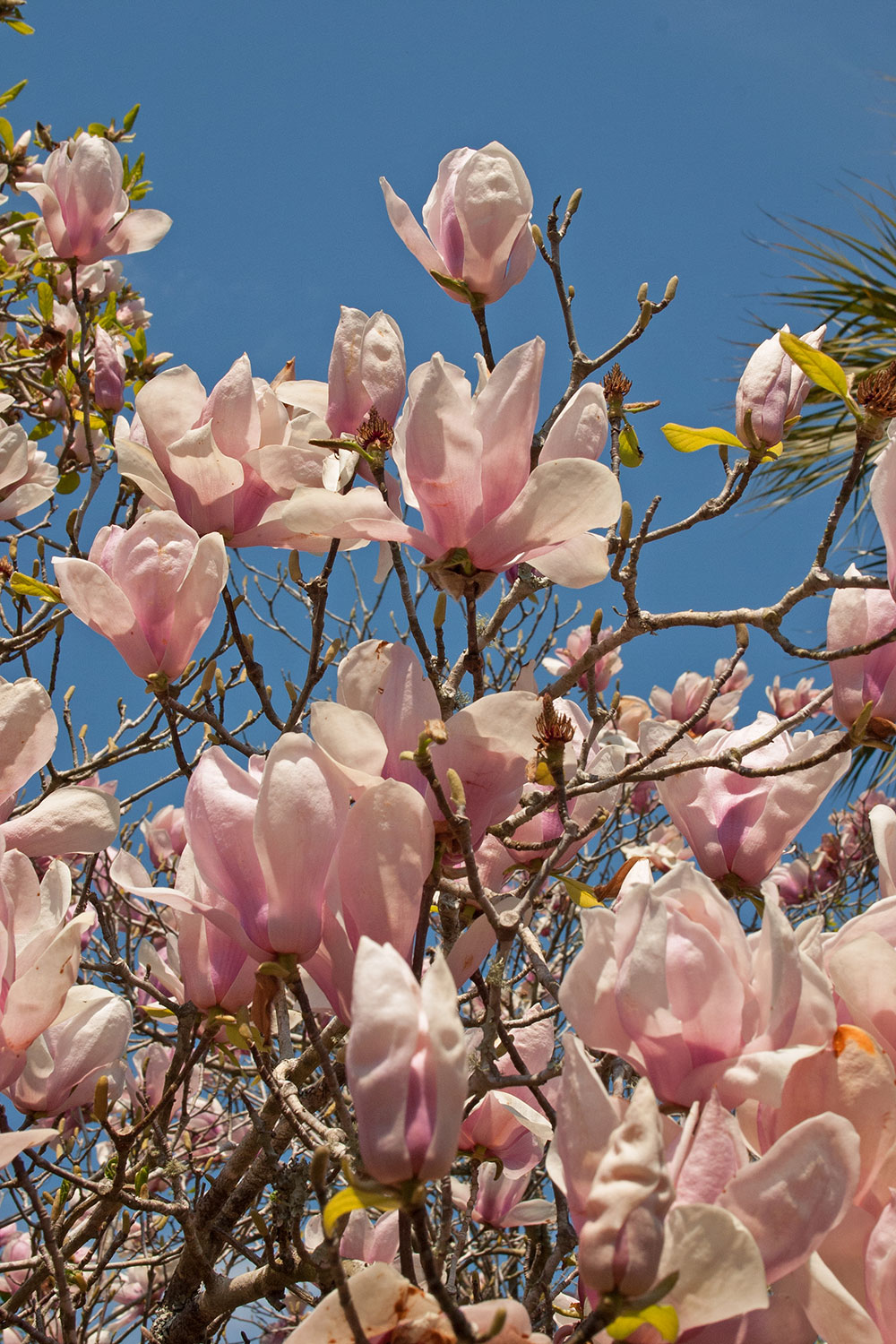A southern magnolia (Magnolia grandiflora) in full bloom on a hot, sultry summer day is quite a pleasant sight to see. But why wait until it gets steamy and sticky to see such a pretty display? There is a maverick band of magnolias that can’t even wait for the chilly air of a waning winter to exit the garden before they start flaunting their flowers. Heck, many can’t even wait for their foliage to form before they begin bursting with blooms!
These impatient showoffs are collectively known as deciduous magnolias. Unlike the iconic evergreen southern magnolia, they drop their leaves in the fall, but come bouncing back visually in the late winter to early spring with their blooms leading the way.

Star magnolias can light up a late winter day.
One popular form of these raring-to-go pretties is the saucer magnolia (Magnolia x soulangiana), which has large early bird fl owers that commonly glow in the familiar magnolia white hue — though various cultivars can be found tinged in pink, light purple, or, with a little help from similar deciduous magnolia species, even yellow. A saucer magnolia will usually stretch up to 20 feet high and about as wide.

Leftover Christmas plants such as poinsettias can help brighten up blah winter days.
While the Christmas baubles and bangles have been put away for another year, indoor plants that also helped brighten up the Yuletide season probably remain. If kept healthy, these leftover pretties can be useful for brightening up blah winter days indoors. So, for plants such as poinsettia, amaryllis, Christmas cactus and Jerusalem cherry, only water when the upper half-inch of soil in the pots is dry. In addition, these plants will show off longer if placed in areas of strong, indirect sunlight. Jerusalem cherry is the exception because it will do better in a window that receives at least a few hours of sun each day.
For a slightly smaller profile, try a selection from the star magnolia (Magnolia stellata) clan, which typically reach about 15 feet high and wide. As advertised, light-colored, strap-like, centrally radiating petals put on a pleasant, star-like show from bare branches yet to be adorned with mid-green leaves.
Deciduous magnolias should be planted in rich, well-draining soil. Once established, they can stand moderate bouts of drought, but renewing mulch around their bases yearly makes for happier trees.
These special magnolias perform well in full sunlight, but, if possible, don’t site them in a protected chilly-weather setting such as close to the southern side of a house where the low winter sun can create a cozy environment during the coldest months.
The reason for this odd avoidance is because deciduous magnolias in such a comfy microclimate might be nudged to bloom much sooner than they should, leaving the opening flowers exposed to possible damage from hard frosts or prolonged freezes that are typical in midwinter.
Deciduous magnolias aren’t as common in area landscapes as southern magnolias, but, at this time of year, they should still be easy finds at local nurseries. They will be the bare-branched, small trees with swelling buds eager to pop out and help chase the late winter blues away!
To Do in the Garden
January
- Diaries might seem old fashioned, but, for gardeners, starting one at the beginning of the year and making comments monthly or even weekly about good and bad experiences with plants through the seasons could prove to be quite useful in prepping for next year’s planting. Don’t like writing? Set up an image diary instead.
- Have any large garden pots that you just didn’t feel like muscling inside for the winter? Leave the big boys outdoors, but turn them over to prevent water from collecting inside and freezing, which could crack your planting crockery.
February
- Apply 1 pound of nitrogen fertilizer for every 1,000 square feet of fescue lawn to wake up your living carpet. Also, if bothersome winter weeds such as wild garlic, henbit, wild onion, or chickweed have been trying to get a grip in your grass, crash their party with a broadleaf herbicide.
- Green thumb itching to get growing in the veggie patch? Turnips, arugula, cabbage, broccoli, spinach, carrots, kale, radishes, leek, lettuce, onions, and Irish potatoes can all go in the garden by the middle of this month.
- Out & About in Wake County: January / February 2024
- Cary’s Park de Triomphe
- Crafting Your Ideal Strength Training Journey
- Erica Chats: Give Yourself a Mental Makeover
- Small Business Spotlight: Pilates by Luiza
- Pay It Forward: Be the Rainbow Foundation
- Celebrated Spirits: How to Start a Fire
- Mosaic Reprise Hazy IPA
- Day to Night
- Garden Adventurer: The Other Magnolias
- Presenting the 2024 Wake Living Readers’ Choice Awards
- Fashionably Fit








